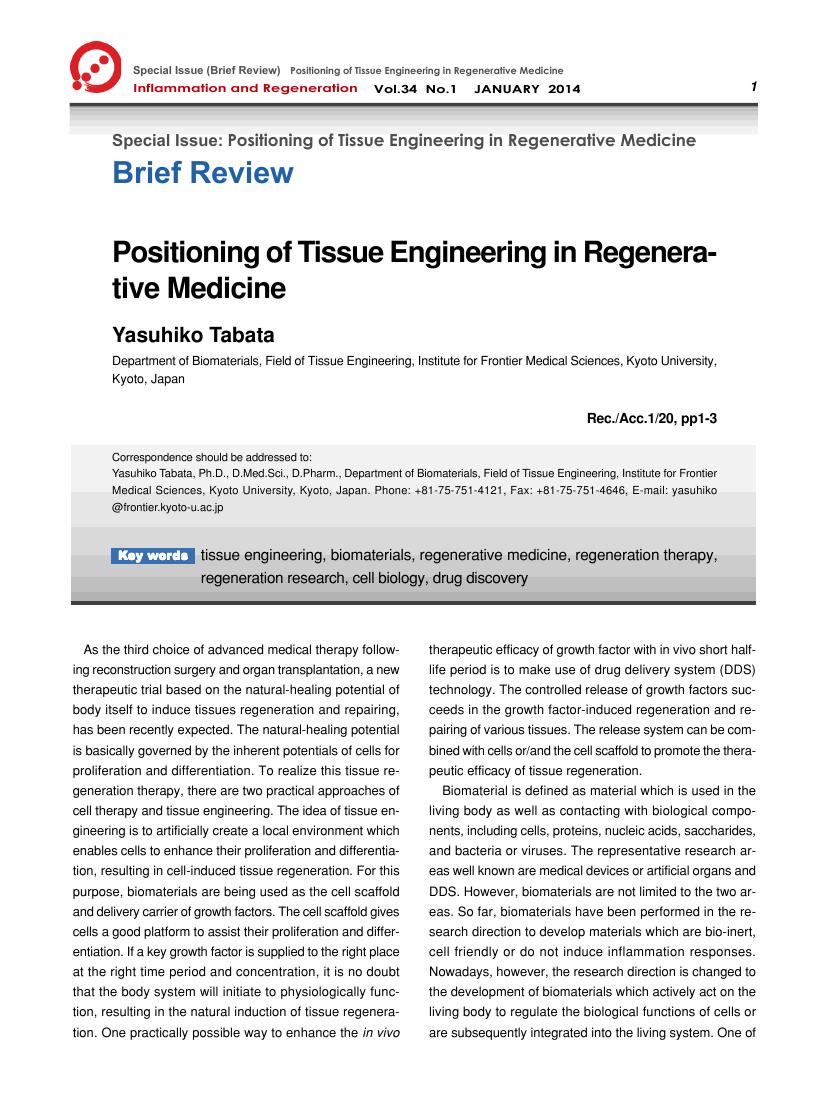- 著者
- Yasuhiko Tabata
- 出版者
- The Japanese Society of Inflammation and Regeneration
- 雑誌
- Inflammation and Regeneration (ISSN:18809693)
- 巻号頁・発行日
- vol.34, no.1, pp.001-003, 2014 (Released:2014-02-15)
- 参考文献数
- 4
- 被引用文献数
- 2 3
- 著者
- Matsushima Yoshihiro Eguchi Fumio Kikukawa Tadahiro Matsuda Takahide
- 出版者
- The Japanese Society of Inflammation and Regeneration
- 雑誌
- Inflammation and Regeneration (ISSN:18809693)
- 巻号頁・発行日
- vol.29, no.1, pp.47-58, 2009
- 被引用文献数
- 16
Humans have used psychoactive mushrooms for medical, recreational, religious and ritual purposes since pre-history. Previous studies have clarified that psychoactive mushrooms produce psychoactive agents such as psilocybin, psilocin, ibotenic acid, and muscimol. However, the status of psychoactive mushrooms in most countries as illegal hallucinogens has prevented full investigation of their biochemical properties. Recent studies have shown that many psychoactive agents pass through the blood-brain barrier and act on neurotransmitter receptors. Psilocybin and psilocin are 5-HT<SUB>1A</SUB> and 5-HT<SUB>2A/C</SUB> receptor agonists, respectively, while ibotenic acid is a glutamic acid receptor agonist and muscimol is a GABA<SUB>A</SUB> receptor agonist. A new psychoactive agent, aeruginascin, has also been isolated from psychoactive mushrooms, and it is expected that more useful compounds will be discovered as the technology of component analysis advances. In addition, it has been shown that psilocybin and psilocin have high therapeutic efficiency for obsessive-compulsive disorder, which is a difficult-to-treat nervous disease. The increase of nervous diseases in modern society has thus given new importance to psychoactive mushrooms. In this review, we summarize the history of the use of psychoactive mushrooms, from pre-history to the modern age, describe their classification and distribution, survey previous studies, and discuss their therapeutic effects for difficult-to-treat nervous disease. The utilization and distribution of psychoactive mushrooms in Japan is given special attention, as there are few articles on this subject.
- 著者
- Yoshihiro Matsushima Fumio Eguchi Tadahiro Kikukawa Takahide Matsuda
- 出版者
- The Japanese Society of Inflammation and Regeneration
- 雑誌
- Inflammation and Regeneration (ISSN:18809693)
- 巻号頁・発行日
- vol.29, no.1, pp.47-58, 2009 (Released:2010-03-15)
- 参考文献数
- 78
- 被引用文献数
- 5 16
Humans have used psychoactive mushrooms for medical, recreational, religious and ritual purposes since pre-history. Previous studies have clarified that psychoactive mushrooms produce psychoactive agents such as psilocybin, psilocin, ibotenic acid, and muscimol. However, the status of psychoactive mushrooms in most countries as illegal hallucinogens has prevented full investigation of their biochemical properties. Recent studies have shown that many psychoactive agents pass through the blood-brain barrier and act on neurotransmitter receptors. Psilocybin and psilocin are 5-HT1A and 5-HT2A/C receptor agonists, respectively, while ibotenic acid is a glutamic acid receptor agonist and muscimol is a GABAA receptor agonist. A new psychoactive agent, aeruginascin, has also been isolated from psychoactive mushrooms, and it is expected that more useful compounds will be discovered as the technology of component analysis advances. In addition, it has been shown that psilocybin and psilocin have high therapeutic efficiency for obsessive-compulsive disorder, which is a difficult-to-treat nervous disease. The increase of nervous diseases in modern society has thus given new importance to psychoactive mushrooms. In this review, we summarize the history of the use of psychoactive mushrooms, from pre-history to the modern age, describe their classification and distribution, survey previous studies, and discuss their therapeutic effects for difficult-to-treat nervous disease. The utilization and distribution of psychoactive mushrooms in Japan is given special attention, as there are few articles on this subject.
1 0 0 0 MTT法によるリンパ球幼若化反応の検討
- 著者
- 小林 豊一 原田 ひとみ 柴田 健介 廣瀬 俊一
- 出版者
- The Japanese Society of Inflammation and Regeneration
- 雑誌
- 炎症 (ISSN:03894290)
- 巻号頁・発行日
- vol.13, no.4, pp.383-386, 1993
The effect of several agents on mitogen-induced proliferative response<I>in vitro</I>was studied by using colorimetric MTT [3- (4, 5-dimenthyl-2-thiazolyl) -2, 5-diphenyl-2H tetrazolium bromide] assay. Immuno-modulator levamisole and TOK-8801 enhanced concanavalin A and lipopolysaccharide response in murine splenocytes at concentrations of 10<SUP>-6</SUP>-10<SUP>-5</SUP>M and 10<SUP>-4</SUP>M, respectively. Immunosuppressant mizoribine decreased dose dependently this response.<BR>These results show that MTT assay may be a useful method for the evaluation of immunological affecting agents on cell proliferative response.
- 著者
- 冨岡 玖夫
- 出版者
- The Japanese Society of Inflammation and Regeneration
- 雑誌
- 炎症・再生 (ISSN:13468022)
- 巻号頁・発行日
- vol.22, no.1, pp.7-8, 2002
